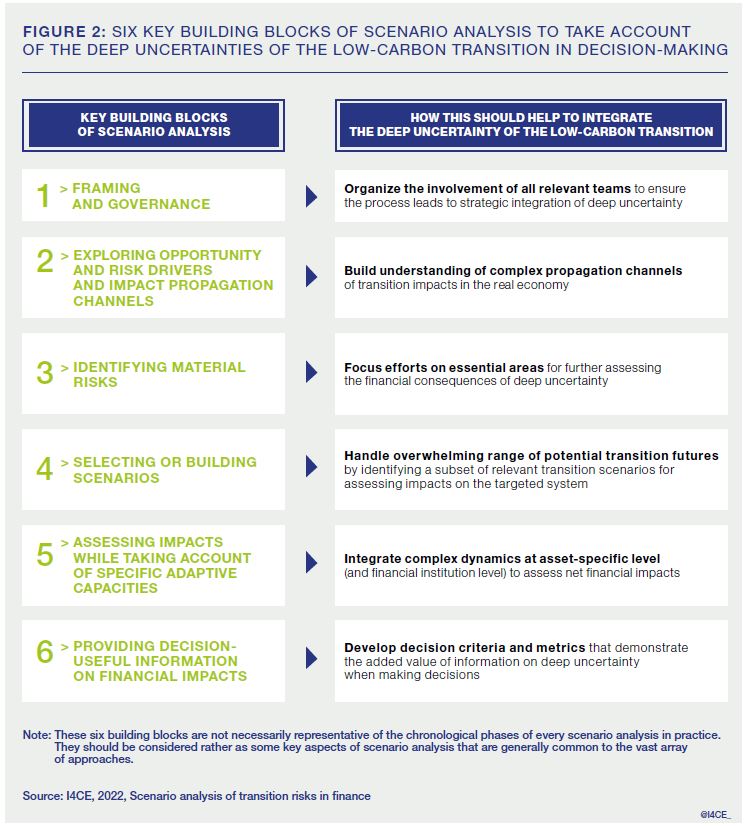Ideally, a range of principles should be implemented in the scenario analysis process to ensure relevant exploration of deep uncertainty
and proper integration into decisions:
1. FRAMING AND GOVERNANCE
Involve all relevant teams to ensure the process leads to strategic integration of deep uncertainty
2. EXPLORING OPPORTUNITY AND RISK DRIVERS AND IMPACT PROPAGATION CHANNELS
Build understanding of complex propagation channels of transition impacts in the real economy
3. IDENTIFYING MATERIAL RISKS
Focus efforts on essential areas for further assessing the financial consequences of deep uncertainty
4. SELECTING OR BUILDING SCENARIOS
Handle overwhelming range of potential transition futures by identifying a subset of relevant transition scenarios for assessing impacts on the targeted system
5. ASSESSING IMPACTS WHILE ACCOUNTING FOR SPECIFIC ADAPTIVE CAPACITIES
Integrate complex dynamics at asset-specific level to appreciate specific risks and opportunities and assess net financial impacts
6. PROVIDING DECISION-USEFUL INFORMATION ON FINANCIAL IMPACTS
Develop decision criteria and metrics that demonstrate the added value of information on deep uncertainty when making decisions
